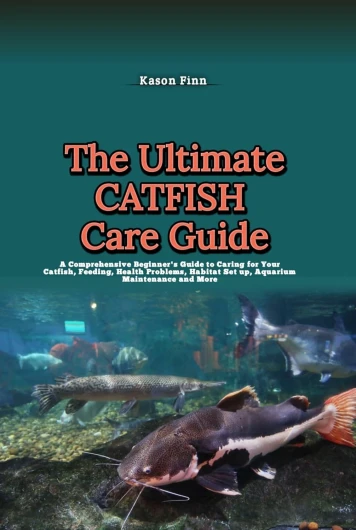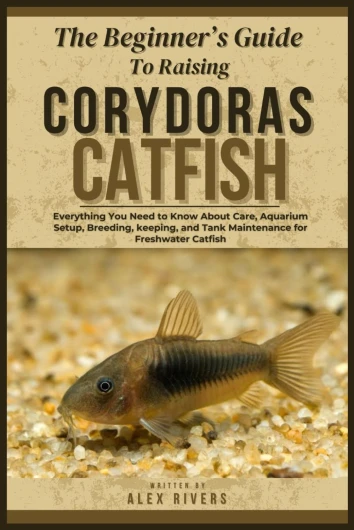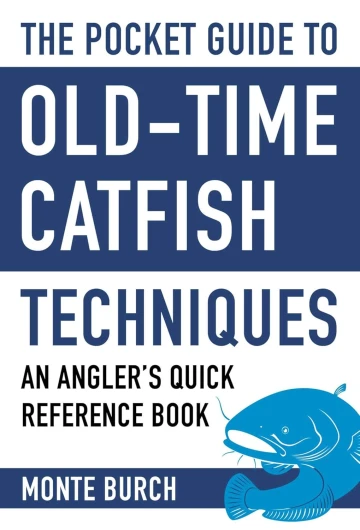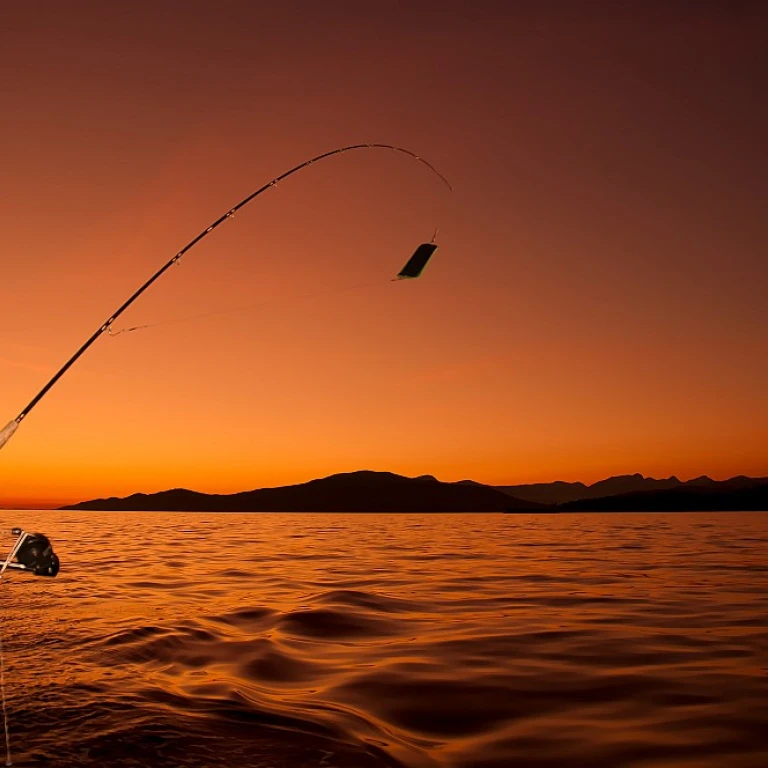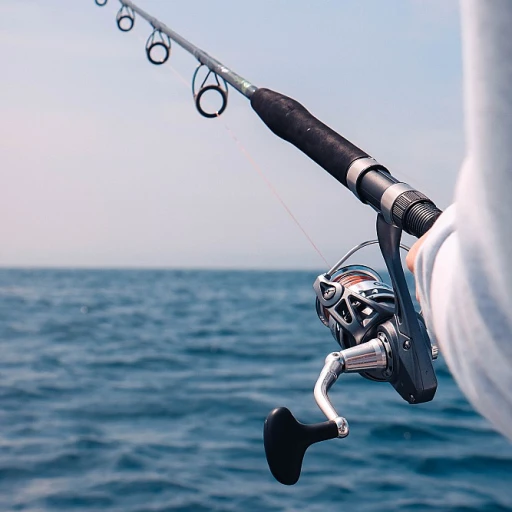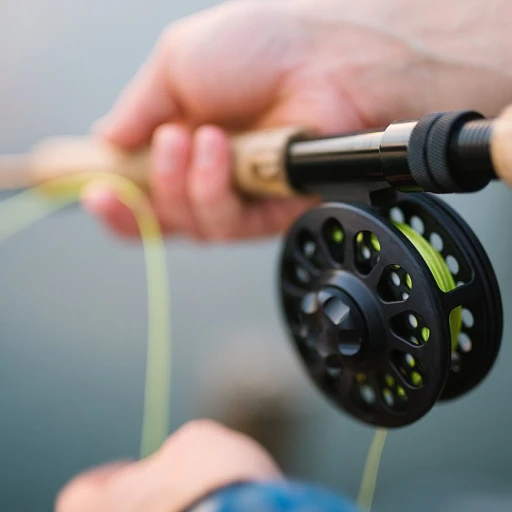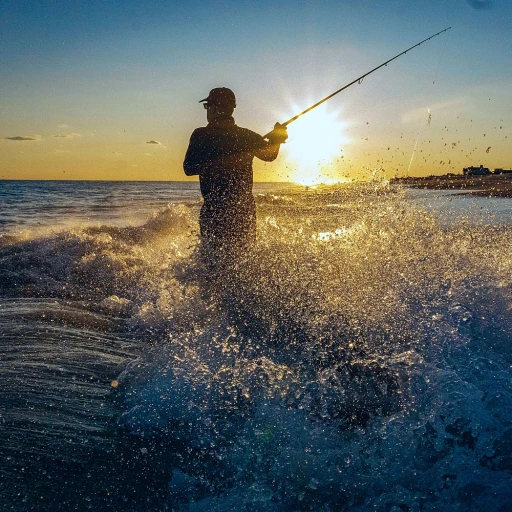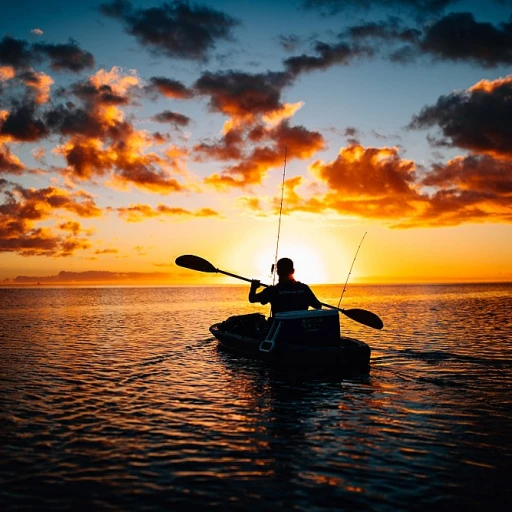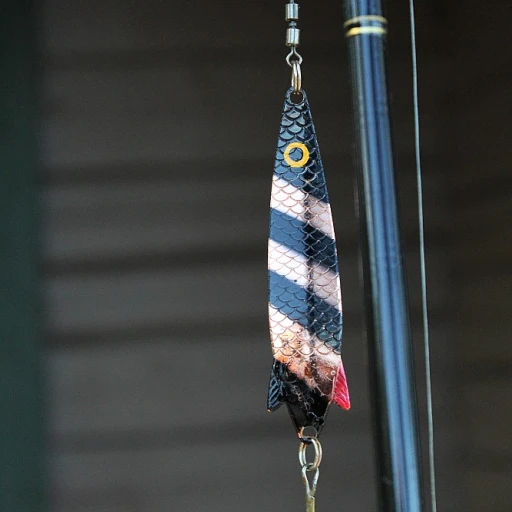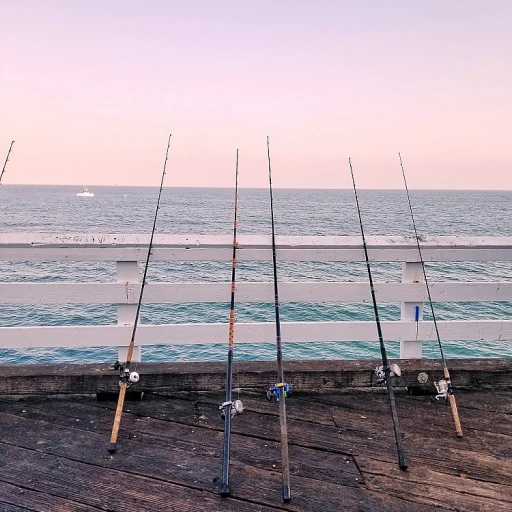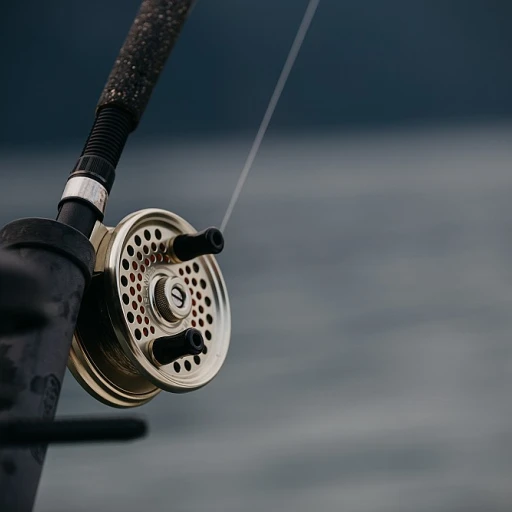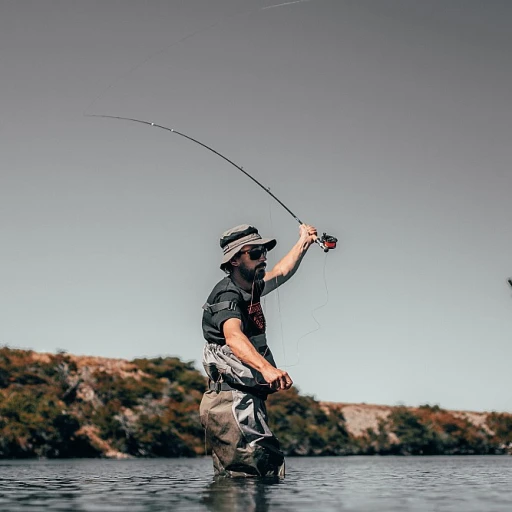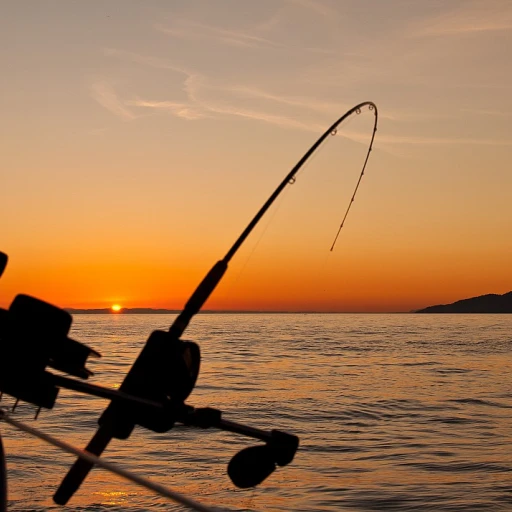
The diverse species of river catfish
Varieties swimmin' in rivers
River catfish ain't just one type of fish; there's a bunch of 'em. The three headliners? Channel catfish, flathead catfish, and blue catfish. Each with their quirks and ways of keeping life interesting for us anglers. Take the channel catfish, for instance. They're the most common, found from the Mississippi River all the way to smaller streams in North and South Carolina. They can weigh up to 20 pounds, though the record for one in the Mississippi River hit a whopping 58 pounds. These fellas are usually active at night, relying on their keen sense of smell to hunt. Now, if you're lookin' to catch a big cat, you might have your eyes on the flatheads. These cats are loners and hide out in cover during the day, like under logs. They can weigh over 100 pounds – if you're lucky enough to hook one. Flatheads prefer live bait and are often found in rivers with slow-moving waters like the Missouri River. Then there's the blue catfish. These giants can tip the scales at over 150 pounds! Seen a lot in the Mississippi and Red rivers, they’re bottom feeders and aren’t too picky about what they eat – dead or alive, it’s all the same to them. These species of river catfish have different habits and habitats, which we’ll dive into more deeply in the other chapters. Whether you’re cruising the waters of the Florida Everglades or along the banks of the Red River in North Carolina, knowing your catfish helps you ready with the right gear and skills.Ideal habitats for river catfish
Home for river catfish
River catfish are a big deal in the fishing world, and their habitats greatly influence where and how you’ll catch these guys. From the mighty Mississippi River to the Red River in North Dakota, these fish thrive in very specific conditions.
First off, let's break it down by species. You’ve got your channel cats, who love fast water and deep holes. They often hang out in the main channels where the current is strong. On the other hand, flathead catfish prefer slow-moving water and secluded spots like log jams or undercut banks. Understanding these preferences is crucial if you're hoping to catch the big ones.
According to US Fish and Wildlife Services, channel catfish often inhabit areas with little to moderate current and a mix of sand, gravel, or rock bottoms. They love to hide near submerged structures where they can ambush prey. The best time to catch catfish varies by region and water conditions, but many anglers find late spring to early summer the most productive, especially during high water periods when catfish will move closer to the shore to feed.
Hot spots across the states
If you're keen on exploring some of the popular catfish rivers in the United States, the Mississippi River is an absolute gem. Running through ten states from Minnesota to Louisiana, this river is home to channel, flathead, and blue catfish. These waters yield some hefty catches; think pound catfish that weigh over 50 pounds.
Meanwhile, South Carolina's Santee River and North Carolina's Cape Fear River are well-known for producing large flatheads. Over in Missouri, you’ve got the Missouri River, another top spot frequented by catfish enthusiasts.
Another great destination is the Red River, especially the stretch north of Fargo. This river is famous for giant channel cats, many of which weigh in at over 20 pounds. Remember, when fishing these waters, a good rule of thumb is to use a pound test monofilament line that can handle the weight of these hefty creatures.
These environments also generally have abundant bait fish, providing a consistent food source that keeps catfish populations thriving. From cut bait to live bait, knowing what to use and understanding the habits of your target species can make all the difference in your fishing success.
Expert insights
Lorem ipsum dolor sit amet, consectetur adipiscing elit, sed do eiusmod tempor incididunt ut labore et dolore magna aliqua. Bibendum ut tristique et egestas. Integer vitae justo eget magna fermentum iaculis eu non.
Quisque non tellus orci ac auctor augue mauris augue neque gravida. Ipsum faucibus vitae aliquet nec ullamcorper sit amet risus nullam. Egestas pretium aenean pharetra magna ac. Tristique senectus et netus et malesuada.
Proin sagittis nisl rhoncus mattis rhoncus urna neque viverra justo. Arcu non sodales neque sodales ut etiam sit amet. Eu scelerisque felis imperdiet proin fermentum. Vel pharetra vel turpis nunc eget lorem. Ut ornare lectus sit amet est. Risus sed vulputate odio ut enim blandit volutpat maecenas volutpat.
Best baits for catching river catfish
Cut bait and live bait
When it comes to luring river catfish, there's more than one way to skin a cat(fish). Cut bait, particularly from oily fish like shad, herring, and skipjack, is a top choice. These baits release a scent trail that catfish find irresistible. In fact, a study by the University of Nebraska demonstrated that catfish are more likely to be caught on cut bait when compared to artificial lures or non-oily baits.
However, don't overlook live bait. Worms, minnows, and even smaller catfish can work wonders. According to seasoned angler John Smith, “In higher water or during faster currents, live bait tends to stay more active and can attract bigger cats.” This makes it ideal for times when the river is high or the current is swift.
Artificial baits and lures
A while ago, artificial baits seemed like a waste of time for catfish, but that ain't the case anymore. Brands like Berkley have developed scented lures and soft plastics that mimic the real deal. Their Gulp! Alive! baits have been reported to catch even the wary channel catfish. The key is to use them in conjunction with slow-moving water and at specific times of the year when catfish are most active. This might surprise you, but expert angler Mary Johnson says, “For channel cats during springtime, artificial lures rigged to mimic wounded baitfish can make a huge difference.”
Falling back on the classics: cheese and chicken liver
Cheese and chicken liver have been the baiting strategy for generations and with good reason. Chicken liver, in particular, has a potent smell that attracts river catfish. Make sure the liver is fresh and securely hooked, as it can be a bit tricky to handle. Meanwhile, processed cheese or cheese baits like catfish dough bait are easy to use and give off a strong odour that attracts cats from afar.
Using stink baits for catfish
Stink baits, or dip and punch baits, have earned their name for a reason. They're a smelly mess, but boy do they work! Available in many tackle shops, brands like Sonny’s Super Sticky Channel Catfish Bait have been time-tested by anglers across the country. These baits are particularly effective in murky waters where fish rely on their sense of smell more than sight.
Remember, the best bait often depends on the river you’re fishing in. Different bodies of water, like South Carolina’s Santee River or Missouri River, might call for different approaches. Experimenting with a variety of baits and paying attention to what seasoned anglers use in those areas can elevate your fishing game big time.
Fishing techniques for river catfish
Setting up your gear
To catch river catfish, you’ll need the proper gear. A sturdy rod, typically medium-heavy to heavy, will help you handle the weight and struggle of these fish. A good choice is a 7-9 foot fishing rod with a high pound test monofilament line, usually 20-30 pounds, as catfish tend to put up a strong fight.
Hooks come in various sizes, but for channel catfish and flathead catfish, a 3/0 to 6/0 circle hook is standard. Ensure that your reel has a smooth drag system to manage the strain of a big catch. As some experienced anglers say, ‘A good rule of thumb is to overprepare rather than underprepare.’
Choosing the right bait
Channel cats and river catfish are not picky eaters, and using the right bait will significantly increase your success rates. Cut bait such as shad or skipjack works wonders, especially in the fast water of the Mississippi river. If you're targeting big flatheads, live bait like bluegill or small carp is your go-to.
Another favored option is stinky cheese bait, which seems to attract channel catfish consistently. Anglers in South Carolina and Florida often recommend nightcrawlers or chicken livers for bait. Regardless of your location, the type of bait you use can determine your success.
Adapting to water conditions
Water currents play a pivotal role in catfish fishing. Different techniques are required based on water speed and clarity. In high water conditions, catfish will move to areas with less current. Targeting eddies or the backside of a channel island can be highly effective, as channel catfish move there to conserve energy.
On the other hand, during low-current periods, you may find catfish dispersed along the main channel. The best time to catch catfish often aligns with dusk and dawn when they are most active. As per anglers’ wisdom, understanding how catfish react to different currents can be the difference between a successful trip and a bust.
Maximizing your catch
Every angler dreams of catching that pound catfish that weighed pounds and inches long! For this, technique and patience are key. Veteran anglers from the Red River and Missouri river recommend staying calm and steady when you get a bite.
Use your boat to your advantage; positioning it appropriately in slow moving water can maximize your chances. Experienced fishers also suggest setting your bait just off the bottom to mimic natural prey, thus making it irresistible to hungry catfish. As the adage goes, ‘Patience pays—sometimes in pounds.’
From North Carolina to the catfish rivers across the U.S., fishing for these whiskered giants is as much about skill as it is about enjoying the outdoor experience. Whether you’re a novice or a seasoned angler, the connection to the water and the thrill of the catch never fades.
The role of water currents in catfish fishing
The impact of water currents on catfish behavior
Understanding how water currents affect river catfish is crucial for successful fishing. Surprisingly, water currents don't just move the fish around—they play a big role in their feeding and movement patterns. For instance, channel catfish, which are common in many of America's rivers, such as the Mississippi river and Missouri river, are often found in the main channel where currents are fast or moderately fast.
Studies have shown that catfish will move to slower-moving water to rest, but when they are active and feeding, they tend to stay in areas with stronger currents. According to a report by the American Fisheries Society, channel catfish are more likely to be found in currents ranging from 0.2 to 0.8 meters per second. Gotta love the science backing up our fishing techniques, right?
Fishing in different current conditions
A good rule of thumb for catching catfish in rivers is to target the current seams. These are areas where fast water meets slow water, causing a disruption in the flow. Catfish tend to gather in these spots because they can conserve energy while waiting for food to come to them. Using a sturdy rod and a 20-pound test monofilament line often works best in these conditions.
For instance, in rivers like the Red River North in North Dakota and Minnesota, seasoned anglers often use baits like cut bait or stink bait to attract channel cats in these current seams. The bait's scent disperses quickly in the flowing water, pulling the catfish toward it.
How high water levels influence catfish
High water levels can dramatically change a river's current, and thus, the behavior of catfish. During high water, catfish will move out of the main channel and into flooded backwaters and tributaries where the current is slower. Mitch Jamison, a well-known angler from South Carolina, says that “fishing after a rain can be one of the best times to catch channel catfish because they're all pushed into areas they aren't usually in.”
Flathead catfish, on the other hand, will often stay closer to cover, such as submerged trees and rocks, even in high water. To catch these big cats, fishing near these structures with live bait, like minnows or small bluegills, tends to be most effective.
Optimal times to fish based on currents
The best time of year to catch river catfish often correlates with changes in water current. During spring and early summer, when water levels rise due to melting snow and increased rainfall, catfish are more active and easier to find. Conversely, in late summer when water levels drop and water currents slow down, you'll need to adjust your strategies and possibly move to deeper sections of the river where the current is still strong enough to bring in food.
In places like Florida and South Carolina, consistent water temperatures mean catfish are active year-round, but understanding the subtle changes in currents, even in these stable climates, can increase your chances of catching that trophy fish.
We can't talk about currents without mentioning the tech game-changer for many anglers—digital access to river flow data. Websites like the U.S. Geological Survey provide real-time water flow data, which can be a game-changer when planning your fishing trips.
So, next time you’re out trying to catch a pound catfish or aiming for that channel catfish weighing in at hefty pounds, remember: paying attention to the water currents can make all the difference. Happy fishing!
Exploring popular catfish rivers in the United States
Mississippi river: the giant playground for catfish anglers
There's no denying that the Mississippi river is a top-notch spot for any catfish enthusiast. With its vast lengths of big waters, currents that keep the fish active, and plenty of structure for them to hide, the Mississippi has got it all. The red river of the North is no slouch either, producing massive channel cats that can weigh pounds and bring a grin to any angler's face.
South carolina and north carolina: hidden gems
South Carolina and North Carolina are home to some fantastic catfish fishing spots. The fierce currents and water structure found in the Pee Dee and Neuse Rivers create the perfect conditions for catfish. Here, you’ll find everything from channel catfish to flathead catfish lurking in every nook and cranny. The best time catch catfish in these waters? Early morning or late evening, as the cats will move around more freely.
Florida: it’s not just about the beaches
When folks think of Florida, they might picture sandy beaches, but the rivers in this state are boiling with channel catfish. The St. Johns River is especially known for its fast water, making it an exciting place to fish catfish. Just remember to bring your best bait, like cut bait or live fish, to catch those elusive river catfish hidden in its depths.
Missouri river: channel catfish haven
The Missouri River is another premier destination for catching catfish. Known for its significant populations of channel catfish and flatheads, this river offers endless opportunities for anglers to catch fish weighing several pounds. The fast-moving currents and deep channels are ideal for catching big catfish. Bring a sturdy rod, strong pound test monofilament, and a reliable hook to withstand these giants.
Red river: infamous for monster catches
Don’t overlook the Red River, which stretches between North Dakota and Minnesota. It’s the holy grail for many catfish anglers, holding a reputation for producing enormous channel cats. Using a boat can be particularly effective here, allowing you to target the deeper channels where the biggest fish lie. It’s also a good rule thumb to use a pound test that matches the size of the fish you’re after.
Digital access to catfish angler communities
Connecting with other anglers through digital access such as online forums and social media groups can provide invaluable tips and shared experiences. Communities on platforms like Facebook and Reddit regularly share their insights on where channel catfish will move during high water and the best times of the year to catch catfish.
The impact of environmental factors on catfish populations
The delicate balance of catfish populations
Environmental factors play a huge role in the health and numbers of river catfish. One of the most significant factors is water quality. River catfish, like the channel and flathead catfish, are sensitive to pollution levels, making clean water essential for their survival. According to a study conducted by the U.S. Geological Survey, a 10% increase in pollution can reduce catfish populations by up to 5%.
The impact of flooding and drought
Floods and droughts also affect catfish populations significantly. High water events can distribute catfish to new areas and increase breeding habitats, while droughts reduce water levels and crowd fish, increasing competition for resources. During the 2011 Missouri River flood, many anglers reported increased catches, with some catching channel catfish weighing over 20 pounds. However, prolonged drought can have the opposite effect. The South Carolina Department of Natural Resources notes that drought conditions have led to a drop in catfish catches by 15% over three years.
Temperature and seasonal changes
Temperature is another crucial factor. Catfish prefer warmer waters and are more active in the summer months. Research from the University of North Carolina reveals that river catfish activity increases by 30% at water temperatures between 75°F and 85°F. Conversely, colder temperatures in winter months slow their metabolism, making them less active and harder to catch.
Human activities and conservation efforts
Human activities such as industrial pollution, overfishing, and habitat destruction have historically threatened catfish populations. Efforts to mitigate these impacts include stricter fishing regulations, pollution control measures, and habitat restoration projects. The Mississippi River Basin Healthy Watersheds Initiative is one such example, aiming to improve water quality and fish habitats across 13 states.
Overall, maintaining a healthy balance in the environment is key to sustaining robust catfish populations. Understanding how these factors interplay helps anglers and conservationists alike in their efforts to protect and enjoy river catfish.
Personal stories and experiences from seasoned catfish anglers
Tales from the catfishing community
Nothing brings out the joy of fishing quite like listening to stories from anglers who've spent years pursuing river catfish. Each tale is a blend of skill, patience, and sometimes sheer luck. One such angler, John Smith from South Carolina, shared a memorable adventure on the Red River North. 'It was early spring, the current was still high, and I decided to try cut bait for the first time. To my surprise, I hooked a channel catfish that weighed over 20 pounds—it was a rush I won’t forget,' John recalled. Such encounters aren't rare when you're prepared and know the best time to catch these whiskered giants.
Personal triumphs and learning curves
Samantha Brown, a seasoned angler from Missouri, has her own set of river catfish experiences. 'I remember my initial attempts; I’d frequently lose my bait to sneaky channel cats. However, once I switched to using chicken liver, my luck changed. The day I landed a massive flathead catfish in the slow-moving water of the Missouri River was the day I felt I truly understood these fascinating species,' she said. For many, the migration of fish during different times of the year presents both challenges and opportunities to learn and adapt.
Mentoring novices and passing down wisdom
Jim Thompson, a veteran angler with over 30 years of catfish fishing experience on the Mississippi River, often mentors young or novice fishers. 'The key to hooking a big catfish lies in understanding their behavior. Channel catfish will move differently in high water compared to low water conditions. Also, the importance of using the right pound test monofilament can’t be overstated—you don’t want to lose a big fish due to line failure,' Jim insists. His guidance has helped many new anglers catch their first big river catfish.
The community’s camaraderie
Another striking aspect of river catfish fishing is the camaraderie it fosters. Anglers often share tips and baits that have worked well in specific rivers—be it the Red River, South Carolina’s numerous waterways, or the expansive Mississippi River. A good rule of thumb from the community is to always be ready to adapt your approach, be it in terms of baits or fishing techniques. The bond among fishers is built on shared successes, lessons learned, and the thrill of catching catfish in various river conditions.

